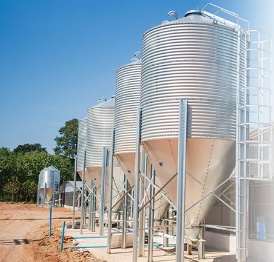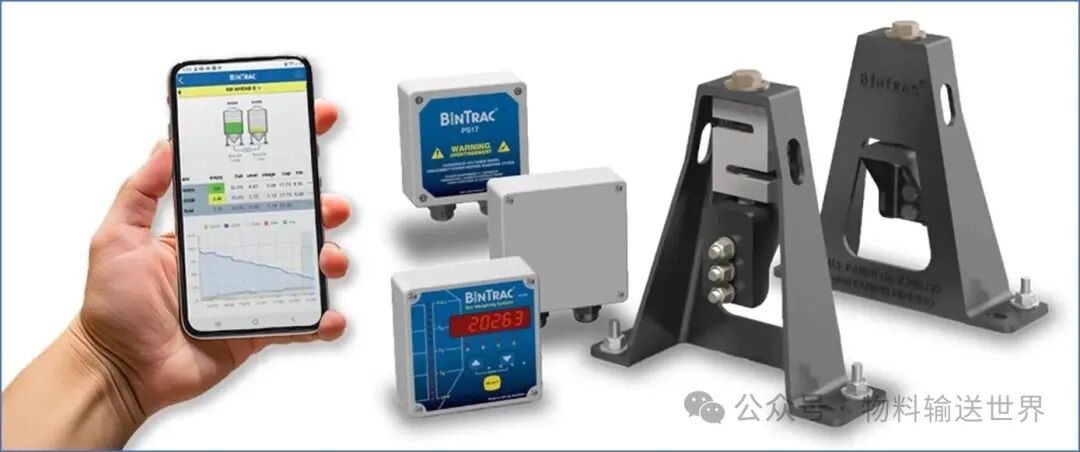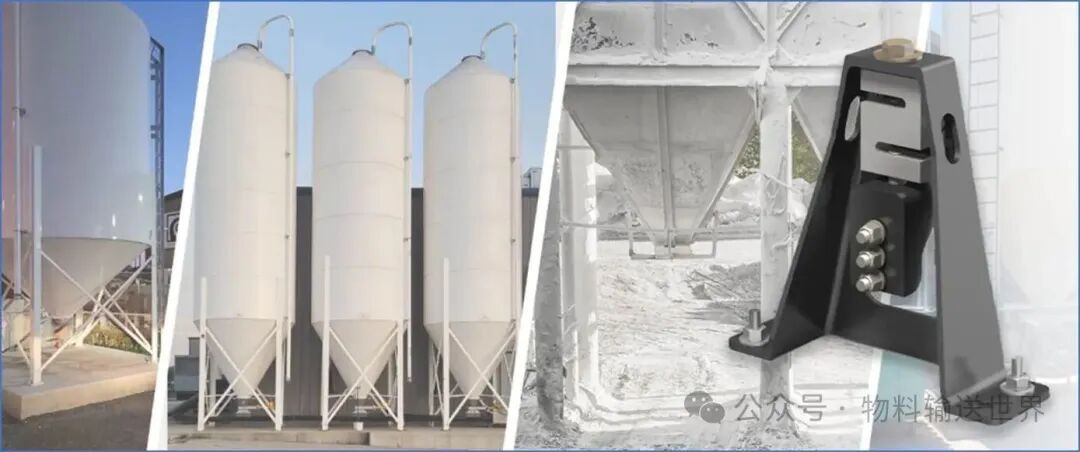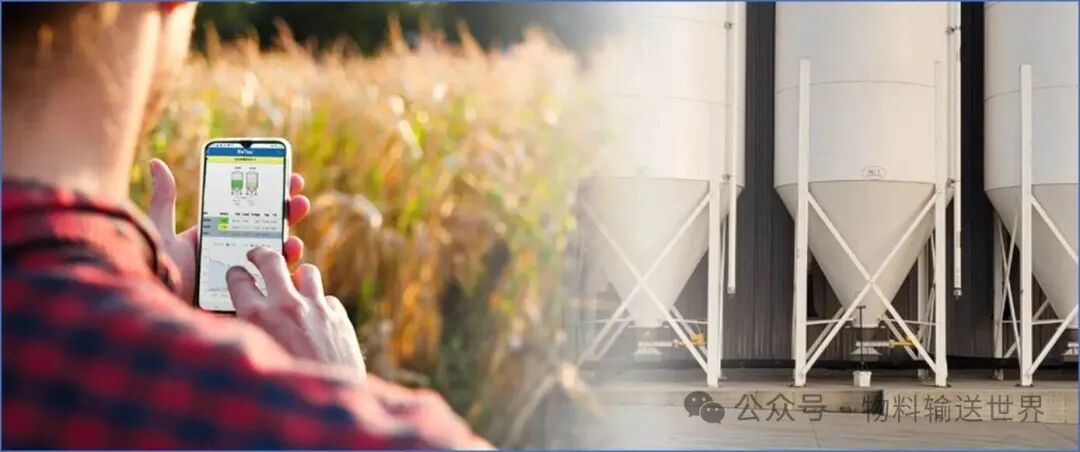What Role Do Weighing Sensors Play in Bulk Material Inventory Systems?

The weighing sensors in bulk material inventory face different challenges compared to boxed or packaged materials. What you are tracking is not the items on warehouse shelves, but the constantly changing mass of materials within closed silos, bins, and hoppers, which are also affected by vibrations, environmental exposure, load variations, as well as changes in compaction and bulk density.
This article will share the working principle of weight sensors, the components involved, common application scenarios and advantages, best practices for installation and calibration, integration options, and how to consider evaluating return on investment. It is hoped that this will help readers gain a comprehensive understanding of their application in bulk material inventory systems.
Inventory System Based on Weighing Sensors
The core of the inventory system based on weight sensors is to measure the weight of storage containers (silos, hoppers, bins) using weight sensors. Generally, weight sensors are used to measure vertical forces (weights) and output weak electrical signals. These signals are amplified, adjusted, and converted into digital weight readings by electronic devices, which are then sent to local displays, monitoring software, or cloud services. These devices or services interpret the digital data as inventory levels, trends, and alerts.
Unlike level sensors that measure volume or material level through contact or non-contact sensing, load cells directly measure weight. This makes them particularly suitable in situations where material density varies, material accumulates, and irregular internal geometry causes level and volume conversions to be unreliable, or where absolute accuracy needs to be maintained over a wide range.
Key System Components
A typical inventory system based on a weighing sensor includes:
Load cell:Installed beneath or attached to the legs of silos/bins, used to measure the weight of the entire container and its contents. Common types include A-frame, flat compression, and simple load cells, selected based on capacity and installation requirements.
Junction box:When using multiple load cells (one for each leg), their signals are combined and balanced in a junction box to provide a single, accurate weight reading. Some junction boxes are designed to perform analog-to-digital conversion of the load cell output signals.
Indicator/Transmitter:This is an electronic module capable of performing various functions such as amplifying load cell signals, executing analog-to-digital conversion, applying filtering and temperature compensation, and outputting weight through digital protocols (Modbus, 4–20 mA, TCP/IP, cellular networks, etc.).
Power/Surge Protection:The system typically includes robust surge protection and power management to protect electronic devices from electrical transients and lightning strikes, which is crucial for outdoor bins and silos.
Installation of hardware/bracket:Brackets or specially designed components are used to secure load cells and adapt them to various leg styles and container geometries. Proper installation can protect load cells from lateral forces and allow for thermal expansion.
Monitoring Software/Cloud Service:A console or other device for data visualization, reporting, alerting, and historical trend analysis. The software converts raw weights into usable inventory data and applies container tare and density/volume conversion as needed.
Communication:Use local wired connections, factory Ethernet, and an increasing number of cellular networks or internet telemetry technologies to transmit data to local systems or cloud dashboards for remote monitoring.

The key components of an intelligent weighing sensor system typically include a weighing sensor, an indicator or transmitter, a power supply, a summation box, and compatibility with remote monitoring software.
How does a weighing sensor track inventory?
The system continuously measures the gross weight of the container, subtracts the known tare weight (the weight of the empty container), and calculates the net weight of the stored material. The monitoring software can:
- Track inflows and outflows in near real-time, making usage rates and trends visible.
- Calculate the remaining days and send a restock alert when inventory falls below a predefined threshold.
- Record historical data for auditing, invoicing, and process optimization.
When the particle density or geometric shape and stacking condition are sufficiently indicated (for example, in a material pile conversion table), convert weight to volume.
The method of using a weighing sensor directly measures the weight, reducing errors caused by the assumptions in level-to-volume conversion. This is especially valuable for materials that are prone to compaction, bridging, layering, or density changes due to humidity.
Typical application scenarios
The inventory system based on weight sensors is widely used in various industries.
Agriculture and Feed Factory:Inventory management of grains, feed ingredients, and finished livestock feed in outdoor silos and indoor bins.
Brewery, distillery, and winery.Accurately measure the weight of ingredients such as malt, hops, grapes, grains, fruits, and sugar.
Food processing and baking:Monitor bulk flour, sugar, shortening, and ingredient inventory to prevent production delays.
Plastics and chemicals:Track particles, powders, and particulates that may shift or change in density.
Construction and Aggregates:Measure the sand, cement, gravel, and pebbles stored in the silo on site.
Wastewater and municipal operations:Monitoring bulk chemicals or sludge storage, where level sensors may fail due to coatings or foam.
Industrial manufacturing:Track the inventory of raw materials in storage and blending hoppers.
Measurable Benefits of the Weighing Sensor System
Direct weight measurement:Fewer assumptions mean more accurate inventory data, even when density changes.
Cross-material reliability:Suitable for level sensors for powders, granules, flakes, and irregular solids.
Robust operation in harsh environments.A suitably specified weighing sensor system can withstand dust, temperature fluctuations, and mechanical vibrations.
Ready-to-use integration:Weight data can be fed into ERP, SCADA, MES, and procurement systems to achieve automatic ordering and inventory verification.
Improve operational visibility.Real-time usage rates, trend analysis, and alerts reduce stockouts and emergency shipments.
Reduce Total Cost of Ownership:Although the initial investment may be higher than simple point-level sensors, the increased accuracy reduces waste, production losses, and emergency logistics costs.
Traceability and Compliance:The weight log provides an auditable record for inventory accounting, analytical certificates, and regulatory requirements.

The weighing sensor system measures bulk solids, powders, and granules with high precision in various agricultural, industrial, and processing industries.
Installation and Mechanical Precautions
Correct installation is essential for obtaining accurate readings. Here are some practical tips:
Installation of geometric structure:The weighing sensor must be installed to only bear vertical loads.
Quantity and Layout:A hopper with multiple legs requires each leg to be equipped with a load cell, or a subframe with a load cell and a summation box to combine the outputs.
Leveling and Alignment:During installation, level the bracket. Uneven loads between the sensors can be electronically corrected, but good mechanical alignment can simplify calibration.
Thermal effect:Temperature changes can affect containers and load cells. Choose load cells with built-in temperature compensation and electronic devices rated to meet the site's temperature range.
Lightning and surge protection:External storage bins and silos are vulnerable to surge effects caused by lightning. Use surge protection devices, ensure proper grounding, and purchase lightning warranties for electronic equipment whenever possible.
Maintenance and Inspection:When designing the installation method, ensure that the weighing sensor and junction box are convenient for calibration checks and maintenance.
Calibration and Precision
Proper calibration and setup are crucial for weighing sensors.
Tare setting:Set the tare weight of the empty container to account for the weight of the container and any permanent support components.
Range Calibration:Use known test weights or known material loads to calibrate the range and check linearity.
Regular verification:Develop a plan to verify accuracy over time using test weights, comparing with truck scales, or using known transfer volumes.
Compensation Procedure:Modern indicators provide temperature and nonlinear compensation, digital filtering, and diagnostic functions to flag drift or faulty load cells.
The accuracy depends on the selection of the load cell (capacity and grade), proper installation, and the quality of the electronic equipment.
Software, Connectivity, and Analytics
The value of weight readings can be multiplied through appropriate software.
Dashboard and Alerts:A clear dashboard displays current weight, historical trends, consumption rate, and low stock alerts (via email or SMS).
Remote access:Cloud connectivity or cellular network telemetry technology enables remote monitoring of multiple sites without the need for on-site personnel.
Automatic Replenishment Workflow:When the inventory exceeds the threshold, the system can trigger a purchase order or a replenishment request.
Data export and API:Integration with ERP or plant control systems via Modbus, OPC, REST API, or CSV export supports accounting and process automation.
Predictive Analysis:Advanced settings analyze usage patterns to predict when materials will run out and optimize ordering to minimize holding costs.
Consider security and data integrity: use encrypted communication, role-based access, and reliable local storage backups to prevent data loss during network interruptions.

Cloud-based software with remote inventory monitoring capabilities helps streamline operations, enabling users to make data-driven and cost-effective business decisions.
Maintenance and Lifecycle
Regular maintenance ensures the reliability of measurements.
Visual inspection:Regularly inspect brackets, wiring, connectors, and seals for corrosion, mechanical damage, or rodent gnawing.
Electrical Inspection:Check the junction box and grounding; check for moisture intrusion.
Recalibration:Follow the calibration schedule based on usage, criticality, and regulatory requirements. For production-critical silos, it is typically once a year or every six months.
Software Update:Keep the firmware and monitoring software updated to benefit from bug fixes and security patches.
Maintaining a well-functioning system can operate reliably for many years. Component-level replacements (such as individual load cells, junction boxes, or indicators) are more common than full system replacements.
Cost and Return on Investment
Costs include hardware (weighing sensors, electronics, brackets), controller display, installation labor, software subscription (if cloud-based), and occasional maintenance/calibration. Returns are achieved through:
Reducing emergency deliveries and downtime:Reduce stockouts and expedite shipping.
Optimize Ordering:Reduce excess inventory and save storage costs.
Save manpower:Reduce the frequency of on-site manual inventory counts.
Improvement of Production Plan:Better scheduling based on accurate real-time consumption data.
Preventing Losses:Discover theft or unknown use more quickly.
A simple return on investment model compares the annual savings from reduced emergency purchasing, reduced waste, and labor savings with the total cost. For many operations, the payback period typically ranges from a few months to a few years, depending on the value of materials and the risk and cost of stockouts.
Choose the appropriate system.
When evaluating vendors or solutions, consider:
Application Matching Degree:Does the supplier have experience in your industry, type of material, and containers?
Installation Support:Is on-site support provided for installation, leveling, and calibration?
Protection and Warranty:Does the system include surge protection and proper environmental sealing? What is the warranty period for the load cells and electronic devices?
Integration capability:Can the system easily integrate with your ERP or SCADA systems?
Scalability:Can you add more warehouses, remote sites, or new sensors in the future without dismantling and replacing existing equipment?
Data Policy:Review the security, data ownership, and retention policies of your cloud provider.
Reference and case studies:Look for installation examples in similar industries or environments.
Common Pitfalls and How to Avoid Them
Improper mechanical installation.Experienced installers and dealers can eliminate stress that leads to measurement errors by using the correct brackets and installation procedures.
Ignore environmental risks.It is necessary to mitigate the effects of chemical sprays, dust, extreme temperature fluctuations, and lightning exposure.
Underestimating communication needs:Cellular network coverage, network security, and contingency planning are crucial for remote sites.
Skip calibration:Infrequent calibration can lead to drift and loss of trust in the data.
Over-reliance on level-to-volume conversion:If the material density varies significantly, please choose a mass-based decision or include density measurement.
Accuracy and Reliability
Based on weight sensors, the inventory system provides a reliable and direct method for measuring bulk material inventory in silos, bins, and hoppers. By combining robust mechanical design, precise sensors, durable electronics, and secure monitoring software, these systems offer real-time visibility, resulting in operational resilience, cost savings, and better planning.
Whether the operation requires managing outdoor grain silos, feed silos, indoor batching bins, plastic pellet silos, or construction material hoppers, a well-designed load cell solution can eliminate much of the uncertainty associated with bulk storage. The key lies in combining the right hardware with proper installation, routine calibration, and software that converts raw weight into actionable insights, enabling users to gain confidence, achieve automatic replenishment, reduce waste, and keep production running smoothly.
【Copyright and Disclaimer】The above information is collected and organized by PlastMatch. The copyright belongs to the original author. This article is reprinted for the purpose of providing more information, and it does not imply that PlastMatch endorses the views expressed in the article or guarantees its accuracy. If there are any errors in the source attribution or if your legitimate rights have been infringed, please contact us, and we will promptly correct or remove the content. If other media, websites, or individuals use the aforementioned content, they must clearly indicate the original source and origin of the work and assume legal responsibility on their own.
Most Popular
-

At Least 44 Dead in Century-Old Fire! Questioning Hong Kong's Hong Fu Garden: Why Has the Path to Fire Resistance Taken 15 Years Without Progress?
-

Satellite chemical's profits surge! can the 26.6 billion yuan high-end new materials project meet expectations? a review of progress on four major projects
-

Key Players: The 10 Most Critical Publicly Listed Companies in Solid-State Battery Raw Materials
-

Estun Turns Profitable in 2025 Half-Year Report, Industrial Robot Shipments Rank First Among Domestic Brands
-

Avatr Files for IPO on HKEX, Plans to Complete Listing in Q2 2026






